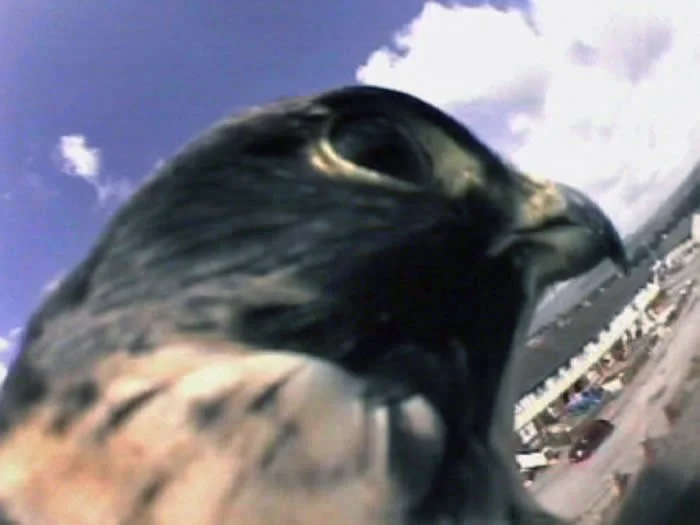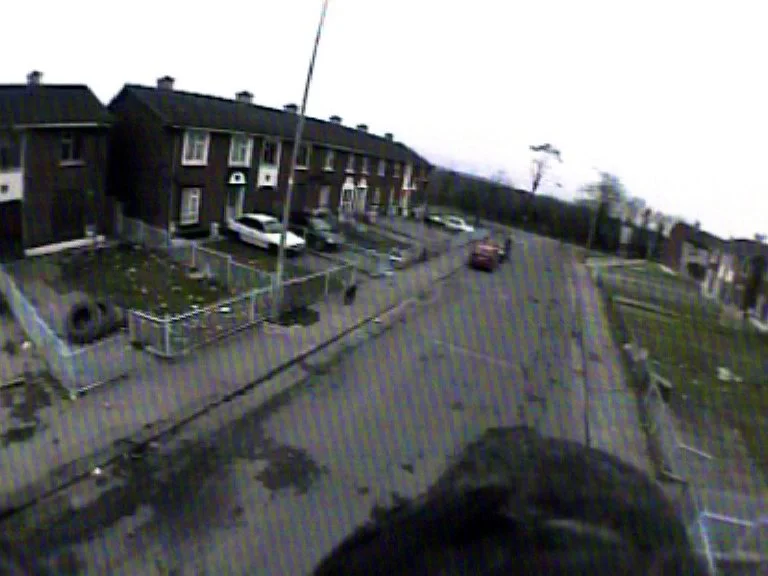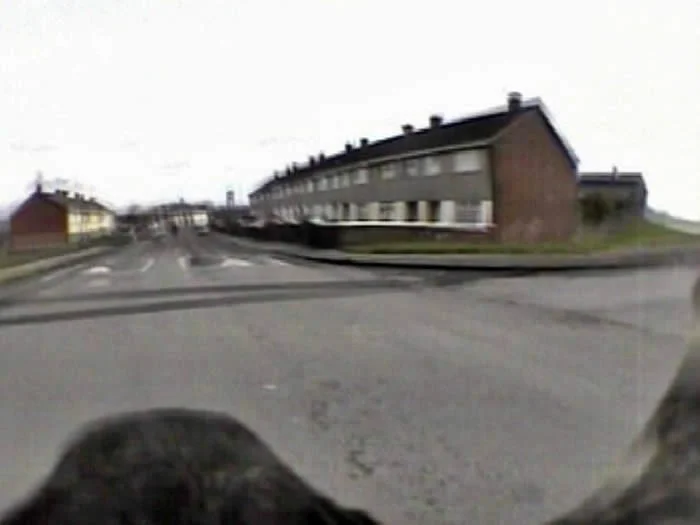Peregrine Falcons Visit Moyross
2008
Projected video, 3 minutes
Moyross is a social housing project initially developed between 1973 and 1987 on the edge of Limerick City, comprising 1,160 houses divided into twelve individual parks. Little-to-no civic infrastructure was provided for inhabitants at the time of construction. Although the population has decreased in recent years, it still stood in excess of 3,600 people in 2008, when the Irish state announced a regeneration ‘vision’, intending to demolish the entire estate and rebuild it on a smaller scale. Large green areas and high partition walls between each park would eventually disappear – places that the City Council consider partially responsible for the socially disenfranchised character of the area at that time.
Various gun-related and violent incidents in Moyross had gained much attention in the Irish media. The archetypical view was of a troubled place, with images of boarded-up doorways of derelict houses reproduced frequently in local and national newspapers, portraying and definitively identifying the area as ‘down and out.’ This journalistic impulse created a haze of oversimplification, damaging any understanding of an active, yet intensively marginalised community and physical infrastructure to a casual outsider. With this issue in mind, an attempt was made to generate a different kind of visuality of the area.
Three specially-trained peregrine falcons were introduced to Moyross. These birds, the fastest creatures in the world, were specifically chosen for their capable ability and confidence to fly around urban areas. They were once populous in Ireland, before the use of chemical pesticides in the 1960s made them an endangered species. Residents met the birds at the local community centre, in school, and in the streets, alleyways and garden areas.
Understanding that falcons are birds of prey and often attack racing pigeons, a special timetable for the skies was agreed with over twenty local loft owners (Concerns were justifiable - previously, falcons nested and bred throughout the 1990s on the spire of Saint John’s Cathedral in Limerick. While the birds were generally popular, members of the local Saint Mary’s racing pigeon club claimed peregrines were killing as many as ten pigeons a day, swooping down from the cathedral spire into coups in backyards of the city.) Then, the falcons took off, with miniature video cameras attached to their bodies. Without the prevalence or availability of drone technology in 2008, this act was commonly viewed as a novel viewpoint. It also made reference to the myth of Sweeney, a figure cursed by the social hierarchy of early medieval Ireland to be half-human, half- bird, to roam the land in a poetic lament to all who affected. The falcons’ free flights acted as a phenomenological recording of the complexity of a place about to potentially disappear under the failed agendas of urban planning, and was subsequently distributed to each house as a DVD disc.





